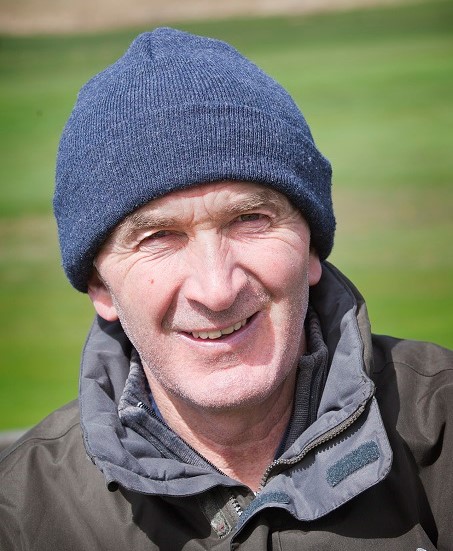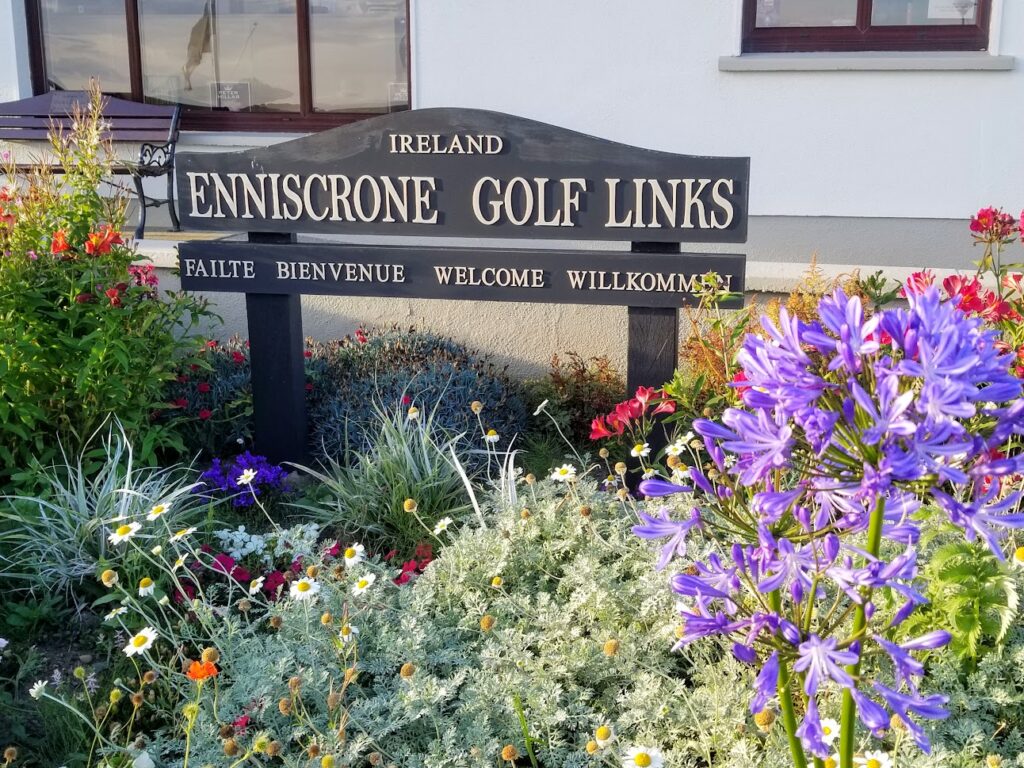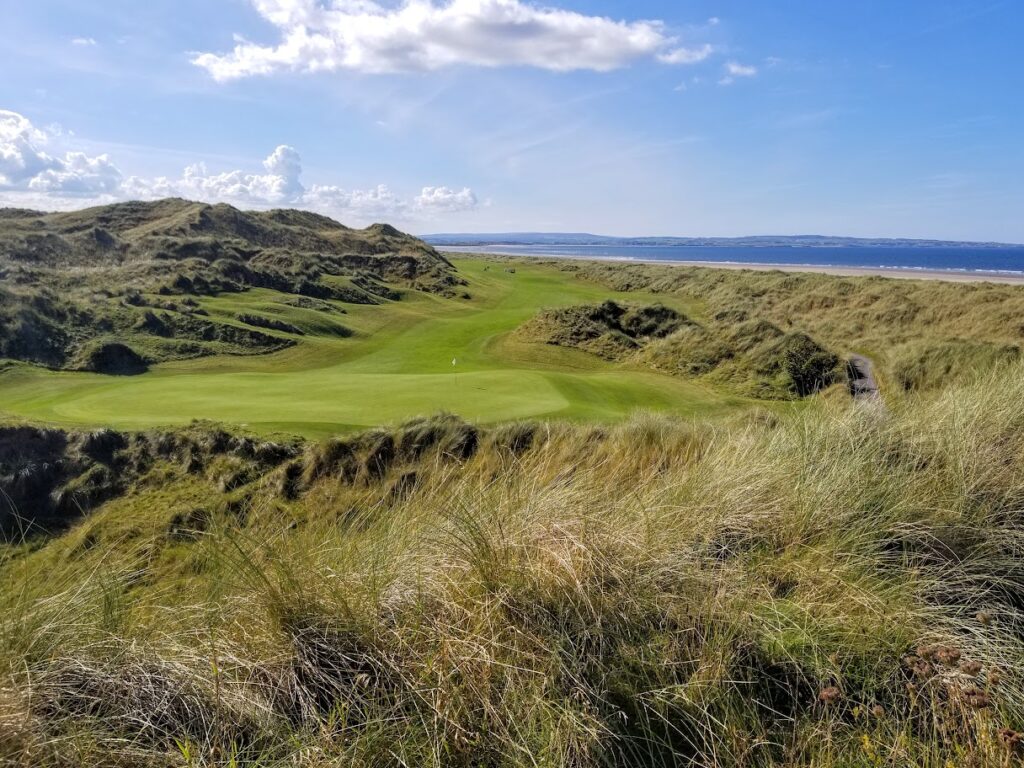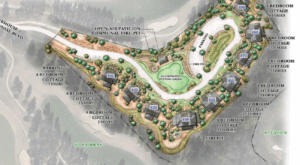By Jason Bruno

Enda Mulrooney has been at Enniscrone Golf Club tending to the seaside links land since 1982. The week we visited the club was his 40th anniversary. Back in 1997, longtime Head Greenkeeper Robert Coleman retired and Enda was promoted to the lead position. By 1999, links architect Donald Steel was commissioned to reroute a portion of the layout into the sand dunes. Steel added six new holes through the coastal dunes, and three new holes in the flatlands to the six existing Hackett holes to produce the Scurmore 9-hole course. In 2001, Enniscrone reopened as a 27-hole facility, as it is today. Enniscrone is known for having some of tallest dunes on earth, and is routinely ranked among the top 15 courses in the Republic of Ireland.
Recently we spent some time with Enda at his maintenance compound discussing his time tending to the Irish links gem.

LinksNation: Who were your mentors early in your career?
Enda Mulrooney: Past Head Green Keeper, Robert Coleman, who worked at Enniscrone Golf Club for 40 years. His equipment at the time was primitive compared to today’s technology. Horse-drawn single unit fairway mower along with a push hand mower for the greens would have been the main pieces used. During his time, he also brought Enniscrone from a 9 to an 18-hole course.
He was a man with an awful lot of knowledge who was willing to pass it on to the next generation. Also had a great admiration for nature and the wildlife around his place of work.
LN: Enda, since you were here at the time, can you elaborate on the creation of the new back 9 and the expansion to 27 holes over 20 years ago?
EM: – The main thing was the committee here in the late 80’s/early 90’s knew we had something special, but we needed a few new spectacular holes along the sea. I’ve met golfers playing the front nine who say how fantastic it is, and I say ” ‘just wait till you hit the back’ “.
LN: How has the Agronomy Operations evolved?:
EM:
- Staff increase
- Advanced machinery
- Irrigation systems
The biggest change in my time has been technology. As the course expanded again to a 27-hole course, the technology has allowed us to manage this increase. Advanced cutting machinery along with improved irrigation systems has greatly benefited us.

LN – The Scurmore 9 (of which six were part of the old championship course) is on the flatlands part of the property, correct?
EM – Yes, that was why the six were dropped, they’re really flat and run parallel to each other, but that nine gets the same care and attention as the championship course. (Scurmore is a popular choice for local juniors and elderly players).
LN – Tell me about your agronomy staff, and what’s the everyday schedule for the team?
EM – Staff wise we have six full-time and one summer staff member. We work with the seasons, so this time of year (summer/early fall) now it’s 6:30 start to 2:15 – we just take one break and get the job done. It’s looking after the paying and green fee members coming out, it’s all about staying ahead of the early play.
LN – That’s quite the task for a staff of six !
EM – Yeah it is, we’ve got the driving range and practice ground on top of that, but we’re kept busy once we’re on site.
Our Staff –
Deputy Head-Ciaran Sweeney: Main responsibility is fairway management, in all aspects. Cutting, spraying applications (including Greens), seeding, etc.
Raymond Sweeney: Tees, Greens and Surrounds, mowing and applications.
Terry Tighe: Greens Mowing and Seeding. Irrigation’s programer and Mechanic.
Aidan Rafter: Cutting of Rough (and semi), Bucket maintenance.
Adrian Rusenburger: Sets up course for each playing day – Tee Markers, pin positions, Care of practice areas and driving range. Along with waste management.

LN – How big is the property?
EM – Some 400 hundred acres, including all of the natural areas and dunes . . .
LN – You began here in 1982, That’s quite impressive to be out here in the elements for 40 years! What would you say is your biggest challenge as a team, is it weather conditions/maintaining bunkers, labor, water, etc ?
EM – It’s a combination, but we have a separate contracted crew that comes out and does the bunker maintenance now and that has been a big help because come springtime we are overloaded. We have a very small crew for the area that needs care. We are in the process of increasing our water storage capacity. With new regulations coming into play in regards to pesticide and herbicide dosages, this has made us adopt other more natural methods of course management.
LN – Being open all year, how do the challenges change throughout the year when the weather changes?
EM – The tourism season is now till the end of October, years back September would be the end of the season for us, we’d be starting off seeding and resting some of the tees. That doesn’t happen anymore, we’ve changed, we don’t seed at the end of the year now anymore. We don’t seed greens, we don’t disturb them, so that’s done in spring now, in early spring. It has a double advantage – you’re coming into better weather and less chance of getting disease, because on the back end if we left it late in September the days are getting shorter, less sunshine and more prone to disease and problems.
LN – Tell us about the turf varieties you have here at Enniscrone and how they interact with each other ?
EM –
Fescues, Bent, Annual Meadow grass.
Ryegrass is used on fairway of 9 hole course and all tee box’s.
We hope to have as much fescue in the greens as possible, but we find now with the new rules and regulations of pesticides and herbicides that it has taken a combination of grasses. Poa is a dominant plant, but we have plenty of fescue and bent in our greens as well, if one struggles the other is there to back it up. They have different start times of growth. The Poa is constant, as where the Fescue is very slow to get going in spring. If you’re dominated by Poa you have a height difference, because the Poa is mad to get going and the Fescue hasn’t woken up yet. The bent being mixed in helps blend things together. I play around with it once the growth comes in, I’ll hold them a little bit without water and without feeding- “lean them”. That way the Poa won’t be thriving, a bit of a standstill. It’s there but it’s not moving forward. The Fescue is catching up on it and working thru it.
LN – For those planning on coming over to Ireland and specifically here to Enniscrone, what is your busiest month of the year along the Wild Atlantic Way?
EM – September, right about now, followed by June when school lets out here.
LN: After 40 years working the land, what still keeps you motivated?
EM: Still have as much Gra (*Gra is a term for affection/love in Ireland) for the work then the day I started. It’s great to witness the growth and expansion of the club during my tenure which is a great motivating factor. This year alone has been the most successful year the club has seen with over 38,000 rounds played on the championship so far.
The location and views surrounding the course are spectacular. The hills and mountains, killa bay, the moy estuary, and to see all this during Enniscrone famous sunset is something to behold.
LN: What’s the next chapter for you after your career at Enniscrone ?
EM: I still have a few years left, but I think what’s most important is that I leave Enniscrone Golf Club in the same brilliant state that Robert Coleman left it to me.
LN – The place looks amazing. A big thanks to both you and Keith, we’re really looking forward to playing the Dunes Course today, cheers.
*For Those interested in joining us in Ireland next August – where we’ll play Enniscrone, County Sligo, Donegal, Carne and Rosapenna – Old Tom Links and St.Patrick’s Links, please click here for information on the full itinerary, pricing and how to book . . .
Coming soon: An in-depth look at the Dunes Course at Enniscrone.



